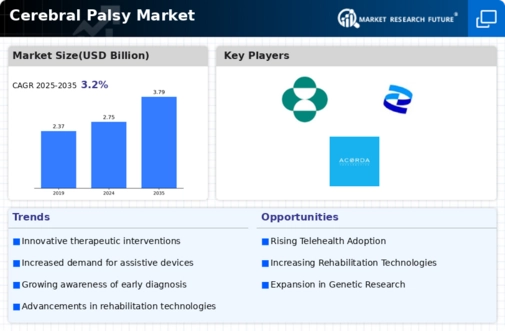Market Share
Cerebral Palsy Market Share Analysis
The Cerebral Palsy (CP) Market today is never the same again as companies appear smartly tactical in enhancing their respective shares within that territory. Differentiation comes up as a major strategy by which firms target developing innovative treatments, therapies, or assistive technologies that target the peculiarities occurring in individuals suffering from CP. On the other hand, cost leadership emerges as another key strategic approach within the CP Market, where groups aim to establish themselves as low-cost providers of essential services. This may entail several aspects, such as manufacturing optimization processes, entering into friendly agreements with suppliers, and ensuring smooth distribution channels, thus reducing overall costs. In developing countries like Zimbabwe, superior pricing strategies make services affordable, hence resulting in more market share penetration, particularly where affordability is an important aspect affecting healthcare choices made by people in those regions. Segmentation of the market is a critical part of positioning strategies for the CP Market. Companies usually identify specific subtypes of cerebral palsy, keeping factors like age, severity of symptoms, or other associated problems in mind. Collaborations and partnerships are important for taking up a strategic position in the CP Market. Marketing and awareness-building activities are essential for market share positioning in the CP Market. Companies invest in educational campaigns to sensitize people about cerebral palsy, its signs and symptoms, and available treatments. Establishing trust and recognition through direct engagement with healthcare professionals and the general public using targeted advertising, participation in medical conferences, and digital platforms results in increased market share. Regulatory strategies help navigate the complex regulatory landscape of the CP Market. In their attempts to ensure compliance with safety and efficacy standards, companies work hard at securing necessary approvals for their interventions, therapies, or assistive technologies. Post-market surveillance is among the key aspects that have a significant impact on market share positioning within the CP Market. Such companies that actively monitor long-term outcomes and the safety of their interventions through post-market studies show commitment to continuous improvement. This not only ensures compliance with regulatory requirements but also strengthens the company's reputation, fostering confidence among healthcare providers and patients, hence solidifying its position in the market.







Leave a Comment